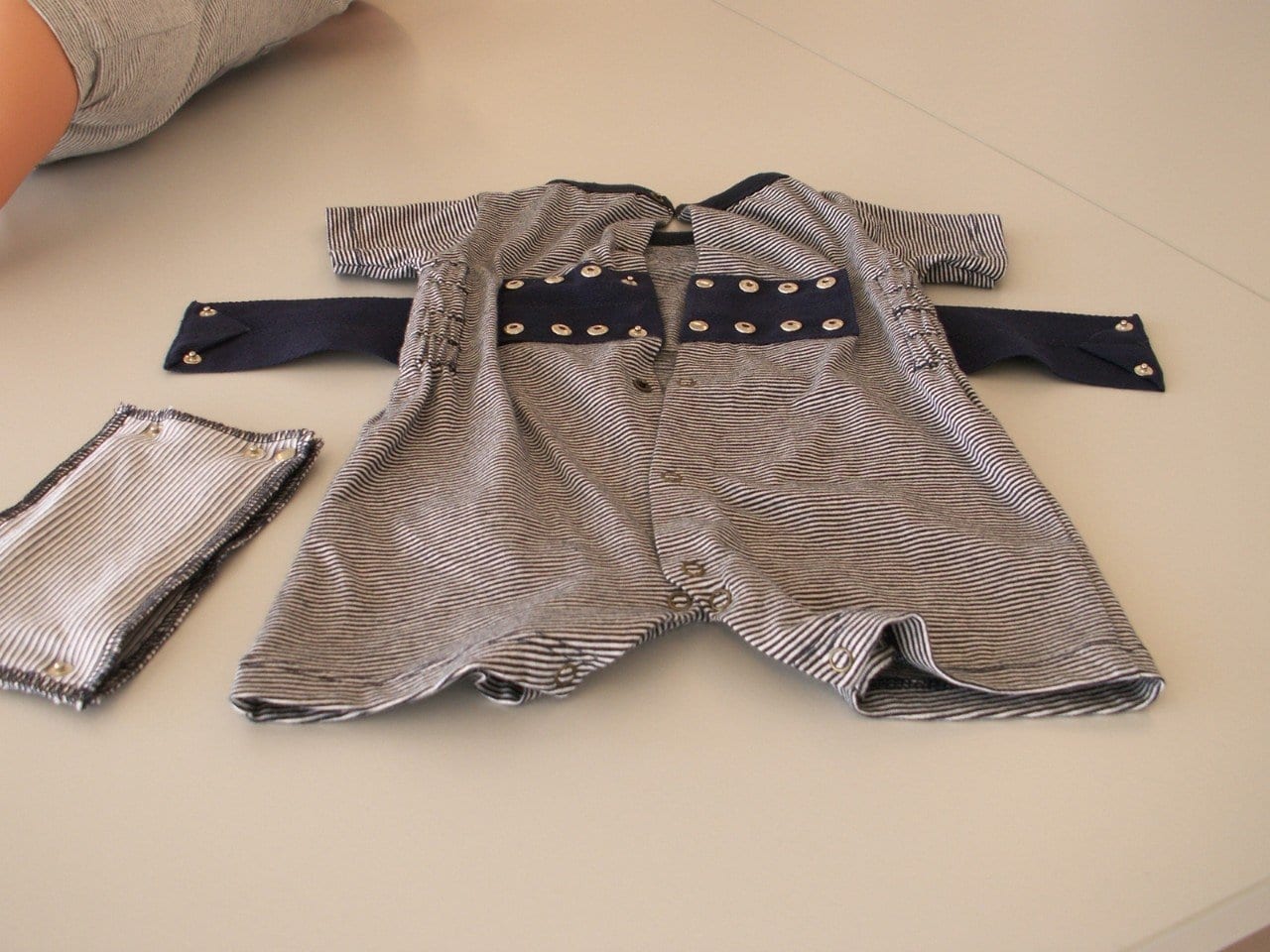
Breathing sensors built into romper suits could help prevent sudden cot deaths in the future. The basis for this is a stretchable printed circuit board that fits to the contours of the body and can be manufactured using routine industrial processes.
Parents of newborn babies are always creeping into the nursery at night to check that their infant is still breathing. Alternatively, they might let baby sleep in their room, hoping to notice any respiratory arrest and intervene before it is too late. In future, a romper suit with an integrated sensor system could warn parents as soon as their child stops breathing. The cornerstone of the sensor system is a stretchable printed circuit board that fits to the contours of the body, making it hardly noticeable. It was developed by researchers at the Fraunhofer Institute for Reliability and Microintegration IZM in Berlin. To demonstrate one of the many possible applications of the stretchable PCB, scientists fitted it with two commercially available sensors and ironed the whole system onto a romper suit. This allows them to monitor breathing in the chest and stomach areas.
The circuit board is made of polyurethane, also known as PU. This is a cost-efficient material more commonly used for coating surfaces, as a sealant, or as a cushioning material. “The circuit board we have developed can be manufactured using routine industrial processes, meaning a high throughput and, consequently, good cost-efficiency,” says Manuel Seckel, scientist at the IZM. “Furthermore, components can be positioned on it just as precisely as on a standard board thanks to the stability of the stretchable substrate during processing. This stands in contrast to textile-based electronics, where one can expect an offset of up to five millimeters over a half-meter area.” However, the researchers had to overcome a number of challenges to achieve the high level of accuracy required. One of these was how to handle and process the polyurethane. “As with stretch fabric, PU PCBs are hard to machine manufacture because they tend to change shape. To counter this, we developed a support system on which we place the PU boards and machine process them before removing the support once more,” explains Seckel. The method is currently being tested by various industrial concerns.
The example of the romper suit is just one of many potential applications for flexible circuit boards. For instance, the technology could also be used to provide subtle lighting in the roof lining of cars – “stars” on the car roof, for example. Equally, it could be set to work in the pressure bandages applied to burn wounds. Here, PU plasters equipped with integrated sensors would help nurses find the optimal placement for the bandage.
Read more . . .
via Fraunhofer Institute
The Latest Streaming News: Sudden infant death updated minute-by-minute
Bookmark this page and come back often
Latest NEWS
Latest VIDEO








